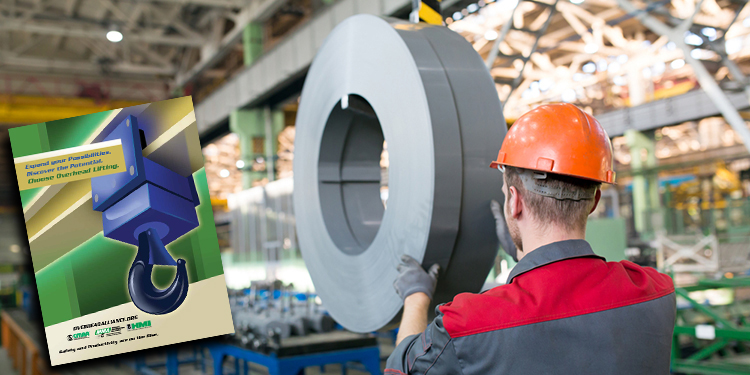Protect Your Employees With Overhead Handling Technologies

This is the first in a series of posts detailing 13 reasons why overhead lifting and handling technologies — specifically cranes, hoists, and monorails — can improve efficiency, productivity, safety, and sustainability. Read more in the free Overhead Alliance publication, “Expand Your Possibilities. Discover the Potential. Choose Overhead Lifting.”
Employee safety and well-being is a top priority in every operation, particularly with current workforce shortages. It’s become more important than ever to keep employees safe on the job in manufacturing and distribution operations. Yet many tasks in these facilities involve manual lifting, pushing, or pulling to transport loads. Indeed, according to Liberty Mutual Insurance’s 2022 Workplace Safety Index, the number one cause of serious, debilitating workplace injuries (those that cause employees to miss work for five days or longer), is overexertion involving outside sources (handling objects). Annually, injuries associated with these jobs cost employers $12.63 billion in workers compensation, medical, and lost-wage expenses.
To reduce the risks of such injuries — and the associated costs — there are a variety of overhead handling technologies that can be deployed to replace manual labor for lifting, transporting, and positioning loads. Solutions such as overhead cranes, hoists, workstation cranes, and monorails safeguard employees by:
- Improving ergonomics. Overhead handling technologies handle the heavy lifting and eliminate the ergonomic strains and exertions associated with manually lifting, pushing, or pulling heavy loads. Solutions exist for loads up to 50 tons or more, preventing physical injuries.
- Using overhead space. Restricted to a specific zone within an operation and operated solely in a facility’s overhead space, overhead lifting systems significantly reduce the need for floor-based load movement technologies. This minimizes employee exposure to potential accidents caused by such vehicles navigating loads through tight spaces.
- Moving along predictable travel paths and speeds. To maximize productivity and reduce the risk of collisions, overhead lifting systems travel in a predictable path at steady, controlled speeds—unlike manually operated load handling carts and motorized vehicles. Workers are also alerted to the overhead system’s operation by integrated safety devices, such as audible alarms and flashing lights.
Looking for more information about the benefits overhead handling systems can bring to manufacturing and distribution operations? MHI’s Overhead Alliance — including the Crane Manufacturers Association of America (CMAA), the Hoist Manufacturers Institute (HMI), and the Monorail Manufacturers Association (MMA) — explores 13 different ways these lifting solutions improve operations in, “Expand Your Possibilities. Discover the Potential. Choose Overhead Lifting.” The publication is free.



